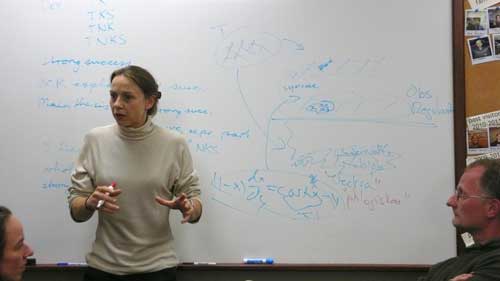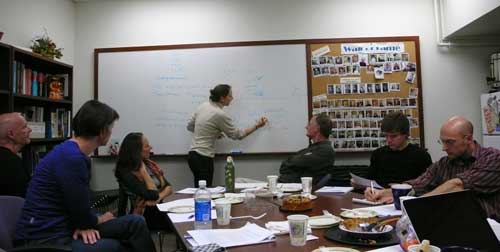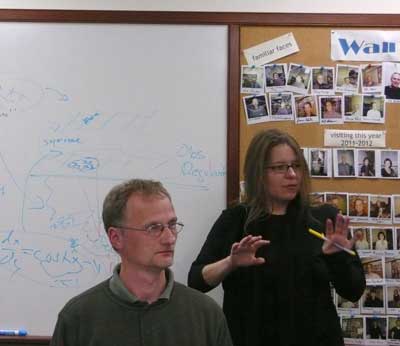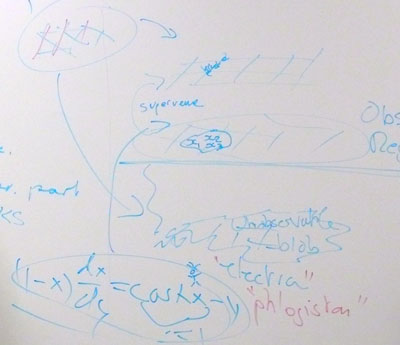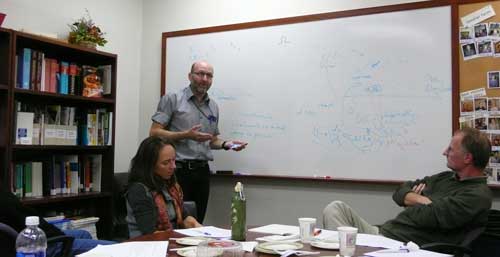

![]()
home
::: about
::: news
::: links
::: giving
::: contact
![]()
events
::: calendar
::: lunchtime
::: annual
lecture series
::: conferences
![]()
people
::: visiting fellows
::: postdoc fellows
::: resident fellows
::: associates
![]()
joining
::: visiting fellowships
::: postdoc fellowships
::: senior fellowships
::: resident fellowships
::: associateships
![]()
being here
::: visiting
::: the last donut
::: photo album
|
The Loveliest Picture "This is the loveliest picture we've had so far. You should take photo." We were sitting in the Center lounge midway through our weekly discussion group meeting when Nils-Eric called this out to me. Obediently, I hurried down the hall to grab my camera. Nils-Eric was right. It was a lovely picture, but perhaps not in the conventional sense of "lovely." Our reading group has been meeting weekly since early September. The hope is that this is where the Fellows as a group will exchange ideas and help each other improve their papers. We had had a slow start. This group had been reluctant to open up and circulate their half-formed research ideas, even though this was the stage at which extra eyes and minds can make a very big difference. It had been bothering me a little. Then, as the weeks passed, I noticed I was less bothered. Now finally, over the past few weeks, I felt we had very successful meetings. Last week, we discussed manuscripts circulated by several of us on a common problem in probability, with a little quantum mechanical attachment. One interesting pattern had emerged. We were starting to meet to discuss a Fellow's work after the Fellow had given a talk on the work. Two weeks ago we'd met to discuss Yuichi's paper shortly he had given a formal talk on the same subject. This week we are discussing Ari's work. He'd given a talk on it last week. There is a marked difference in the nature of our discussion and the discussion that comes after a talk. The discussion in a talk question time is quick, often highlighting troubles the speaker would need to address, but not really resolving any deep issues. Exchanges are cautious and guarded. The discussion in our reading group is leisurely and open. The sense of a casual meeting is reinforced by a freshly warmed pie, whose aroma had crept down the hallways beckoning the Fellows to the meeting. Then the overt presumption is that everyone wants to help make the paper better. There's lots of "What I don't understand is ..." followed by "Why don't you do it this way? Wouldn't that solve the problem?..." That was the sense in which Nils-Eric thought it was a lovely picture. "It is," he said to me afterwards in his elegant Swedish voice, "an aesthetic piece that shows cooperation." Ari's account of realism was complicated and many of us ended up at the blackboard drawing pictures in an effort to tease things out. The art grew from these efforts. When I took my turn, Dana said, "Shall I take a picture of you?" I said, "I'd be quite delighted. I always take the pictures so there's never any of me!' John D. Norton |
